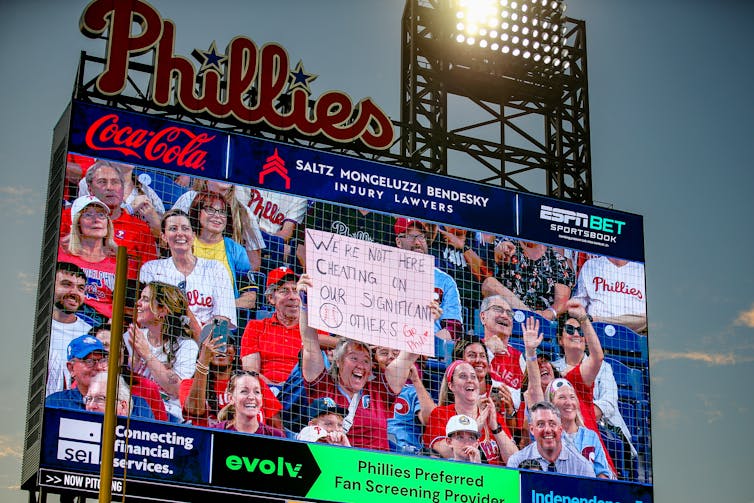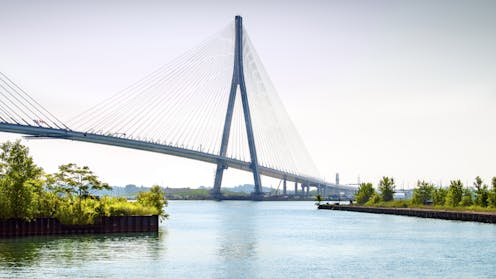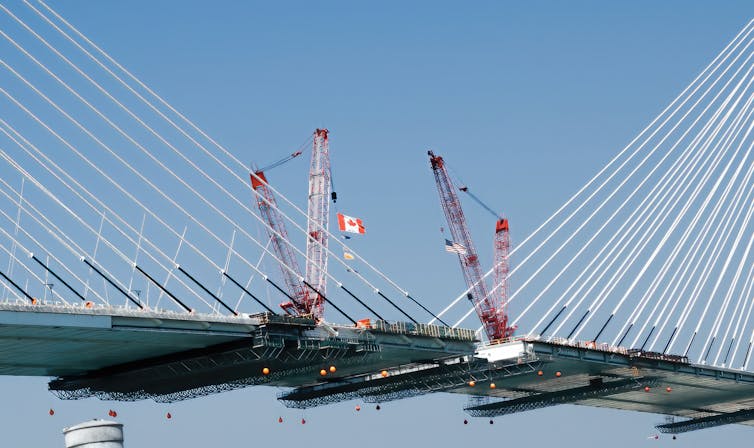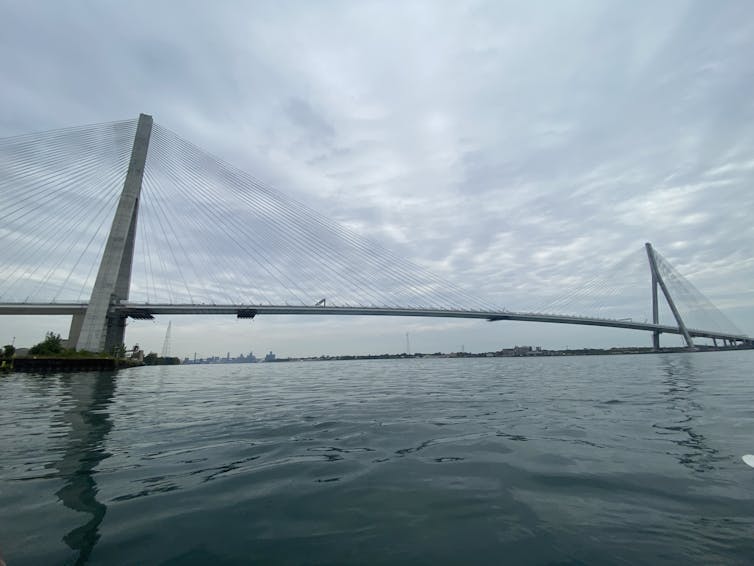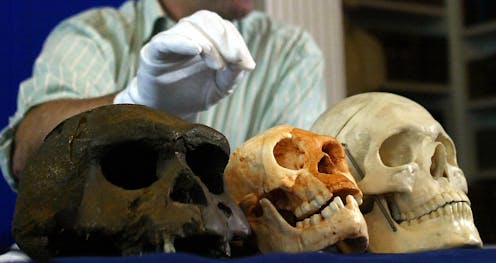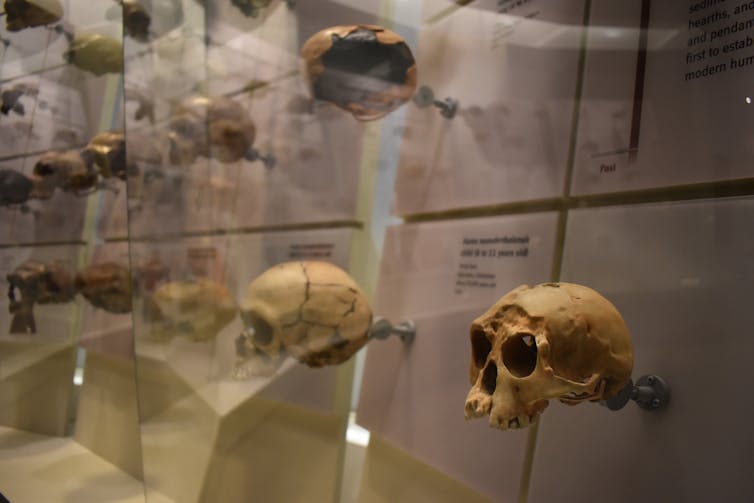Source: The Conversation – USA (2) – By Li Li (李黎), Professor of Civil and Environmental Engineering, Penn State

When you think about heat waves, you might picture sweltering cities, shimmering asphalt and unbearable summer afternoons. These heat waves dominate the headlines because we feel them directly.
Rivers, on the other hand, are often seen as cool refuges, places to escape the heat of summer.
Yet rivers are heating up, too. In fact, they’re heating up faster than the air.
New research from my team shows that riverine heat waves – periods of abnormally high water temperatures in rivers – are becoming more common, more intense and longer-lasting than they were 40 years ago. Their frequency, intensity and duration are also increasing at rates more than twice as fast as heat waves in the atmosphere.
The increased heat puts more stress on aquatic ecosystems, water quality, energy production and agriculture, and it can threaten species that rely on cool streams.
A hidden threat
Riverine heat waves are disruptive in ways that can cascade through aquatic ecosystems.
Cold-water fish such as trout and salmon are especially vulnerable: Extended periods of abnormally high water temperatures can impair reproduction, slow growth and trigger mass die-offs.
Warmer water also holds less oxygen, potentially suffocating aquatic life. In addition, hot water increases the likelihood of algae blooms and elevates the cost of treating water to make it safe for drinking. Warmer water can also create problems for energy production. Many thermoelectric fossil fuel plants and nuclear plants depend on river water for cooling, and warmer water reduces energy production efficiency, which could mean higher power costs.
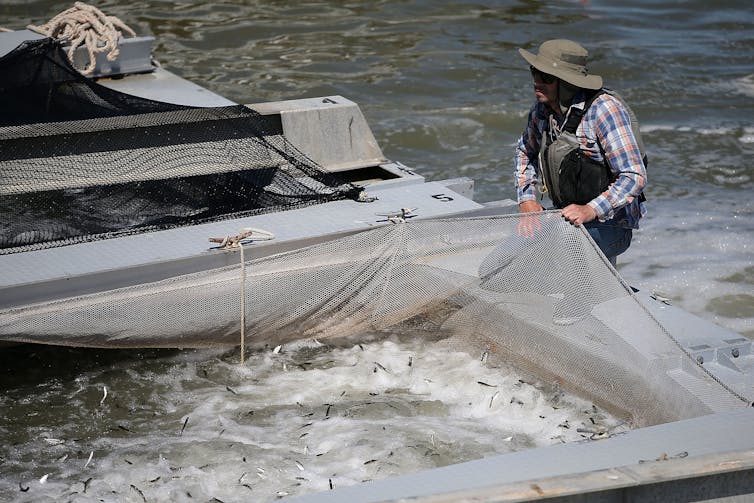
Justin Sullivan/Getty Images
Despite these serious risks, riverine heat waves have gone quietly unnoticed.
That’s due, in part, to the narrow width of rivers and streams. Oceans and lakes are large enough that they can be monitored consistently by satellites. Rivers, however, are harder to track, especially small rivers. Measuring the temperatures in narrow, winding streams requires high resolution that many satellite sensors lack.
Scientists with universities and government agencies have installed many sensors in streams to measure water temperature, and sensor numbers have proliferated since the 1990s. But the data has been patchy and inconsistent. Until recently, scientists lacked the tools to stitch these fragments into a coherent picture. We developed a way to do it.
AI helps create the full picture
To overcome this challenge, we trained a deep learning model to use scattered and inconsistent records to reconstruct continuous daily water temperatures across 1,471 river sites in the contiguous U.S. from 1980 to 2022.
The reconstructed histories of change enabled us, for the first time, to systematically compare the characteristics of riverine and air heat waves across a large and diverse set of rivers and reveal trends that might otherwise remain invisible.

Li Li
The results reveal a troubling pattern.
On average, we found that riverine heat waves occur about half as often as air heat waves, and their temperature increases are a third as intense, but they last nearly twice as long.
More strikingly, their frequency is increasing faster than air heat wave events are. Compared to 1980, an average U.S. river experienced nearly two additional heat wave events in 2022. In 2022, those river heat waves lasted more than three extra days on average than in 1980 and were nearly 1 degree Fahrenheit (almost half a degree Celsius) hotter than in 1980.
Rivers in the Rockies and the Northeast showed some of the steepest increases, driven in part by shrinking snowpacks that once buffered streams with steady supplies of cold meltwater. The rivers are heating up quietly but faster than the air above them.
The drivers: Climate change and human infrastructure
We also wanted to find out whether these trends were mainly driven by climate change or by local infrastructure and other activity, such as dams and agriculture.
A machine learning model we developed to rank the importance of influential environmental factors that drive riverine heat waves found that rising air temperatures, particularly at night, were consistently the strongest factors behind river warming. Declines in snow and streamflow also played major roles, especially in mountain regions where dwindling snowpacks produce less meltwater.
Human infrastructure and other activities also play important supporting roles.
For example, the presence of large dams tends to lengthen heat waves, as warm reservoir water is released downstream. Agriculture shows more complex effects: In some areas, particularly the Midwest, irrigation and crop cover can actually cool rivers by altering local climate and hydrology. But these influences, whether harmful or helpful, are secondary compared to the overarching force of climate change.
What does the future hold?
In a warming world, riverine heat waves threaten to become a critical but underappreciated dimension of the global water–energy–food nexus.
Heat waves often coincide with low streamflows – a likely outcome as climate change reduces runoff from snowmelt. The risks compound. Low, slow-moving water warms more easily and holds less oxygen, creating dangerous conditions for aquatic life and increasing the chances of large-scale die-offs.
These are not just ecological problems. They also directly influence water and food supplies, along with energy reliability.
Unlike air heat waves, riverine heat waves currently remain largely absent from global monitoring systems and adaptation plans. Better understanding the changes and risks will require more coordinated data collection, better global data sharing across agencies and countries, and incorporating river temperature trends into climate risk assessments.
![]()
Li Li (李黎) does not work for, consult, own shares in or receive funding from any company or organization that would benefit from this article, and has disclosed no relevant affiliations beyond their academic appointment.
– ref. Rivers are heating up faster than the air − that’s a problem for aquatic life and people – https://theconversation.com/rivers-are-heating-up-faster-than-the-air-thats-a-problem-for-aquatic-life-and-people-263718







